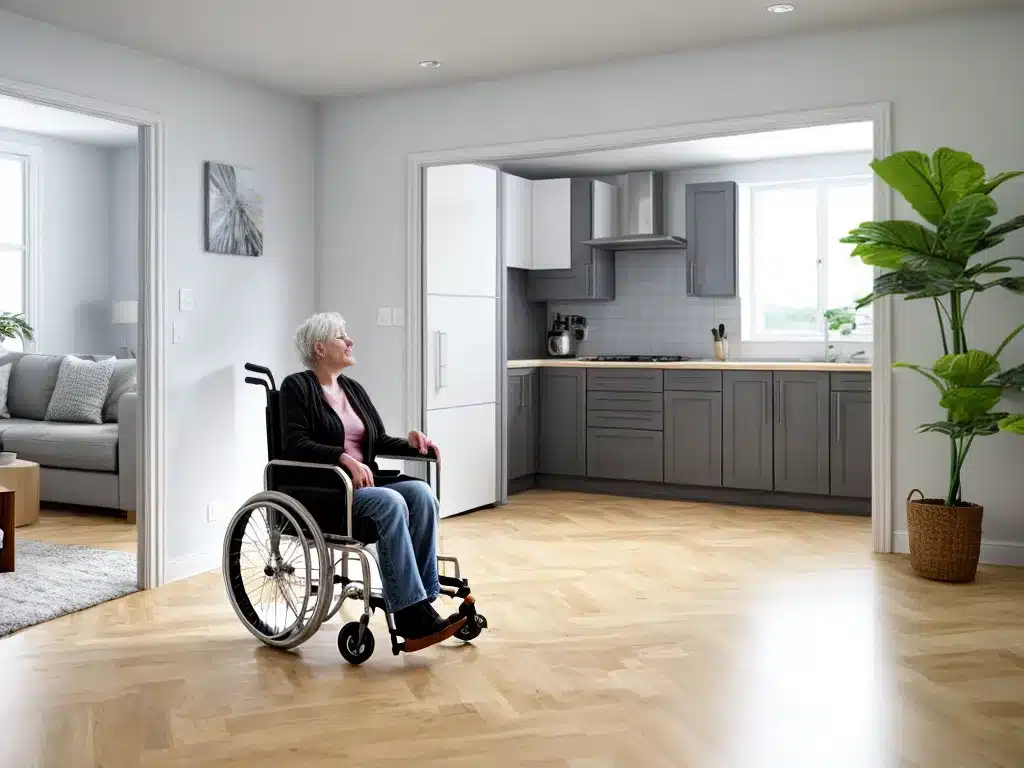
Making your home more accessible can greatly improve your quality of life and allow you to live more independently. As I get older or if I acquire a disability, navigating my home may become difficult. However, there are many simple changes I can make to ensure my home accommodates my needs. Here are some tips to make my house more accessible.
Conduct an Accessibility Audit
The first step is to do a thorough accessibility audit of my home. I need to look at all the areas of my house and take note of any issues or problem areas.
-
Check room layouts – Are the hallways and doorways wide enough for a walker or wheelchair? Is there space to make turns?
-
Look at flooring – Thick carpeting can make using a mobility device difficult. Transition strips between flooring types can be tripping hazards.
-
Examine sinks and countertops – Are sinks accessible from a seated position? Can I easily reach light switches and outlets?
-
Test outlets, switches, and controls – Place these at an accessible height so I can use them from my wheelchair.
-
Evaluate bathrooms and showers – Do I have grab bars installed? Can I access the toilet and shower seat easily?
-
Note stairs and steps – Are there rails I can use for support? Consider installing ramps.
-
Check lighting – Ensure all rooms and hallways have adequate lighting. Motion sensor lights can help illuminate paths at night.
Improve Accessibility Throughout the House
Once I’ve conducted a thorough audit, I can start making changes throughout my home:
Entryway
-
Install a no-step entryway and widen doorways to 36 inches to accommodate wheelchairs and walkers.
-
Make sure there is a level landing space both inside and outside of exterior doors.
-
Add ramps if needed to eliminate steps and tripping hazards.
Hallways and Passageways
-
Widen hallways to at least 36 inches wide and remove any protruding objects.
-
Install handrails on both sides of hallways for support if needed.
-
Make sure all halls and passageways are well-lit with light switches placed at accessible heights.
Bathrooms
-
Replace toilets with comfort height options. Install grab bars near the toilet and shower.
-
Add a shower seat and hand-held shower head.
-
Make sure sink counters, soap, and towels can be reached from a seated position.
Kitchen
-
Lower cabinets and adjust countertop heights to make prepping meals easier.
-
Install pull-down shelving so items can be reached easily.
-
Place frequently used items within easy reach.
Flooring
-
Replace carpeting with low-pile options. Hard flooring like vinyl or wood is ideal for accessibility.
-
Use flush transitions between flooring types to eliminate tripping hazards.
Lighting, Outlets, and Controls
-
Ensure all rooms are well-lit. Use motion sensor lights in hallways and bathrooms.
-
Lower light switches, outlets, and other controls so they can be reached from my wheelchair.
-
Upgrade switches to rocker or touch-light options which are easier to use.
Make My Home Safer and More User-Friendly
A truly accessible home is not just barrier-free, but also offers increased safety and convenience:
Smart Home Technology
-
Install video doorbells and security cameras to see who is at my door without needing to get up.
-
Use smart lights, locks, and thermostats to control my home environment from my phone.
-
Automate blinds, curtains, and windows to manage privacy and sunlight.
Furniture Placement
-
Rearrange furniture to create wide pathways for navigation.
-
Use furniture with adjustable heights. Replace low coffee tables that are hard to get close to.
-
Add furniture with built-in support bars and stability handles.
Safety Enhancements
-
Put fire extinguishers, first aid kids, flashlights and other emergency items within reach.
-
Use monitors, sensors, and alarms to detect emergencies like falls, gas leaks, or floods.
-
Install grab bars, railings, non-slip mats and adequate lighting to prevent falls.
Make Gradual Changes Over Time
The idea of making my home fully accessible can seem daunting. But I don’t need to do everything at once. I can take it step-by-step:
-
Focus first on making my main living areas accessible like the bedroom, kitchen and a main bathroom.
-
Start with inexpensive changes like removing rugs, rearranging furniture and improving lighting.
-
Seek financial assistance programs that provide grants, loans and tax credits for accessibility renovations.
-
Consult occupational therapists to identify problem areas and solutions tailored to my needs.
-
Adapt my home gradually over time as my mobility changes or if I acquire new disabilities.
The right home modifications can allow me to live comfortably and independently. By taking a proactive approach and making accessibility a priority, I can transform my house into a safe, convenient refuge.












